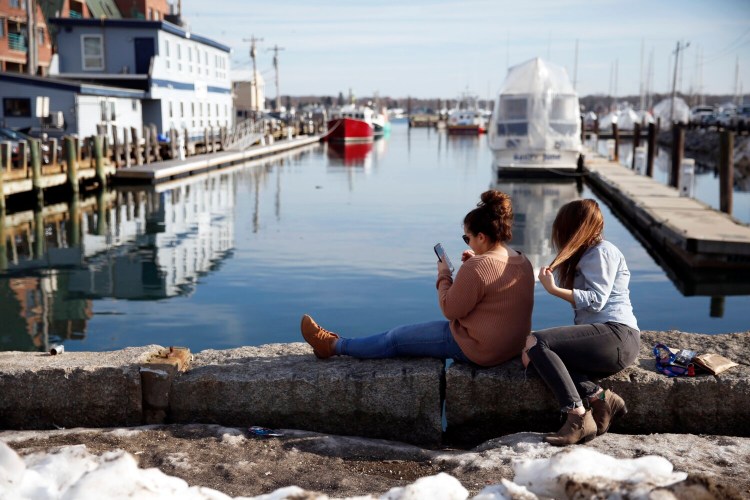Regional officials will try again to get federal funding for a $30 million Portland Harbor dredging project, this time with an additional $10 million of state money waiting in the wings if the second attempt fails.
Local officials and interested groups spent the past 10 years developing a plan to remove silt from between wharves and vessel berthing spaces along the harbor in Portland and South Portland. A decades-long buildup of contaminated material leaves the head of some wharves dry at low tide, cutting off more than a quarter of berthing space in some sections of the harbor and reducing their usefulness for marine businesses and transportation.
Without dredging, space for commercial and recreational vessels could shrink further, potentially threatening the future of Portland’s working waterfront altogether.
“If this project is not completed, the berthing resources will continue to decrease in value and the potential for reinvestment in marine infrastructure and building improvements will continue to diminish,” said the city of Portland in a recent federal grant application.
The plan involves removing polluted sediment built up over generations to a sealed underwater well, called a “confined aquatic disposal cell,” sited near the U.S. Coast Guard station in South Portland. If funded this year, the dredging could be completed by 2027.
State, local and federal officials, pier owners, fishermen and environmental and community groups all support the endeavor, and it has all the permitting it needs, said Bill Needelman, Portland’s waterfront coordinator. The final hurdle will be covering the $30.4 million price tag.
There has been unprecedented collaboration between the two cities, harbor commission and port authority, and “all levels of government – local, regional, state and federal – have supported this process,” Needelman said. “We can’t thank them enough. Without it this harbor will eventually get shut down. Right now, we just need the money.”
A $24 million grant application to the U.S. Department of Transportation for the dredging project was denied last year. Needelman and others hope a revamped application, guided by feedback from the department, will be successful this time around. It can be a challenge to explain the benefits of vessel berthing to an agency more familiar with highways and bridges, Needelman added.
“These are highly competitive grants – there are only a small number of happy letters and a great number of, ‘We’re sorry, we don’t have funding,'” he said. “It is typical for projects to apply multiple times. That is the situation we found ourselves in.”
Portland, South Portland and the Maine Department of Transportation have committed $6.4 million in matching funds to the project in order to qualify for the sought-after grant. But this time around, there is a potential state funding backstop in case the application fails again.
Tucked into Gov. Janet Mills’ $1 billion spending package for Maine’s share of federal coronavirus pandemic relief funding is $10 million for dredging marine facilities in Portland Harbor that may be allotted “only to replace unrealized federal funding.” Lawmakers passed the funding plan last week on a party-line vote.
Rep. Michael Brennan, D-Portland, the city’s former mayor, said the money allocated in the relief bill won’t be enough to pay for the entire project, but it could help leverage more city, county and state funds in case the federal grant application fails again.
“I think what this does is give us a two-pronged strategy to be successful,” Brennan said. “I would certainly not want to be in a situation in November not to get federal money and not utilize state, federal and municipal money we do have. Having those piers available for berthing and working waterfront is essential for the city of Portland and the state of Maine.”
Send questions/comments to the editors.




Comments are no longer available on this story